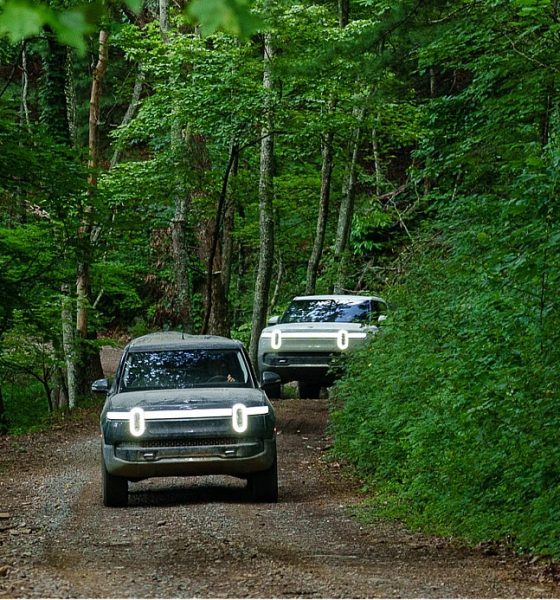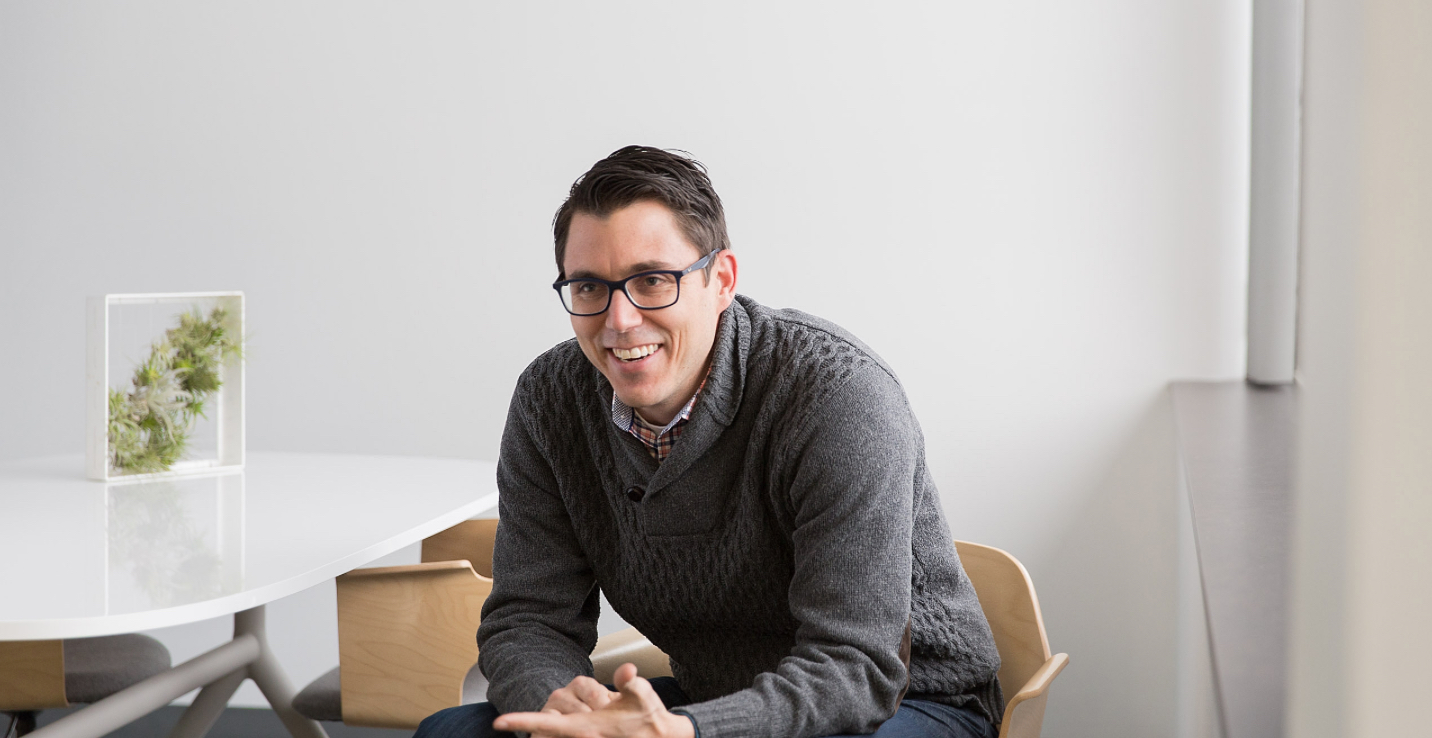

News
EXCLUSIVE: ‘Rivian wanted what Georgia had’: How the Peach State became Rivian’s $5B match
In the Northern portion of Georgia, about 45 miles East of Atlanta, a 2,000-acre slice of land is covered in beautiful trees, hosting stunning landscapes of the rural sections of the Peach State. For several years, Georgia Economic Development Department Commissioner Pat Wilson has pitched this massive piece of beautiful real estate to various automakers, with nobody willing to bring another massive vehicle manufacturing facility to the heart of the Southeastern United States. That was until Rivian came to town.
“It was the perfect company for the perfect site.”
“We considered making it an OEM site,” Wilson, who has been the Commissioner of the State of Georgia’s Economic Development Department since November 2016, told Teslarati in an exclusive interview. He showed the property to Volvo and Toyota/Mazda, among others, over the past few years, but could not come to terms with them on the land. These large-scale, mass-market automakers were unwilling to join Kia, which has a massive $1.8 billion, 2.2 million square foot factory just miles away from the Georgia-Alabama border, to bring a sizeable manufacturing plant to Georgia. It just was not the right fit.
The right fit would eventually come along. While sifting through requests from various companies who were interested in the site and ultimately coming up with no buyers, Wilson knew the right company would eventually show up to build on the land. It would not end up being a car company with a long-standing history of successful automotive manufacturing. Instead, a company known as Rivian Automotive, which just rolled its first production units off of an assembly line in Normal, Illinois, and completed its first deliveries earlier this year, was requesting information. It would end up being the peach Georgia needed to secure its single most significant investment in state history — $5 billion, to be exact. “It was the perfect company for the perfect site,” Wilson said. “Rivian wanted what Georgia had.”
Rivian will build its next EV manufacturing plant in Georgia
CEO RJ Scaringe eventually drove around the 2,000-acre site in a Rivian R1T, plotting ideas and envisioning his young and scrappy company’s second U.S.-located automotive assembly plant. It is a beautiful landscape, and it needed to be preserved. “RJ was genuinely concerned about keeping the area environmentally stable. ” Wilson said. “You only have to look at their website and read a little bit of it to see that this is a company that cares about the world and sustainability. It was important to him to keep the area in its beautiful state.”
“RJ was genuinely concerned about keeping the area environmentally stable…It was important to him to keep the area in its beautiful state.”
Rivian wanted a property with a beautiful landscape, and Wilson said the company wanted to preserve its beauty and integrate its future automotive facility into the topography, which will hit its expected employment of 7,500 people in 2028. It also did not intrude on locals or nearby residents, who gave their blessing for the Economic Development Department to offer the area to large industries. “We don’t propose sites unless we are invited to do so,” Wilson clarified. Citizens welcomed projects with open arms, which solved half of the issue. The next was selling Rivian on the idea.
Selling Scaringe: Lofty Expectations
Rivian undoubtedly had its reservations, and its elevated expectations and accelerated timeline scared off plenty of other regions that were in the running for “Project Terra.” Like other high-tech electric vehicle startups, Rivian had lofty goals to begin production shortly after construction starts. Other states and areas might not have been as willing or able as Georgia to commit to the quick turnaround Rivian and Scaringe had described. Construction will begin in Georgia in Summer 2022, with production lines ramping up in 2024. Rivian hopes to have one of its non-negotiable terms met by launching production around two years after construction crews break ground. Evidently, Speed to Market was a real need for Rivian, and it needed the right State and the right team to make it happen.
CEO & Founder of Rivian, RJ Scaringe (Photo: Rivian)
Speed and efficiency of the construction process was not the only advantage Rivian saw with the site, however. The 2,000-acre land plot that the company locked up and subsequently announced during the company’s first quarterly earnings call as a publicly-traded entity last week also has a great location that could alleviate potential supply chain concerns. Sitting in the Interstate 20 corridor, the plant will have easy access to the Port of Savannah and the State’s 5,000 miles of railway to deliver manufacturing materials quickly. This solved logistical concerns relatively quickly.
There were other concerns too, however. Georgia has one of the lowest unemployment rates in the United States, which sounds like a good thing. Department of Labor statistics listed Georgia’s unemployment rate at just 2.8% for November 2021, the fourth-lowest rate federally, following Nebraska (1.8%), Utah (2.1%), and Oklahoma (2.5%). Interestingly and nearly counterintuitively, a low unemployment rate could actually bring some large-scale companies with sizeable employment needs problems down the road, and Rivian knew that Georgia had a reputation for keeping its people employed. Governor Brian Kemp kept the State’s workforce relatively operational through the COVID-19 pandemic in 2020 and 2021. “He created structure for the State,” which ultimately kept Georgia’s people at work, eliminating widespread unemployment and furloughs, Wilson said.
Georgia committed to Rivian’s needs and essentially removed its concerns regarding employment by securing plans for a Quick Start workforce training program facility at the future automotive plant. Quick Start is a State-sponsored program created in 1967 that provides customized workforce training for expanding industries. It runs through the Georgia Technical College System and gives workers free, hands-on, in-depth training that contributes to the state’s economy. Wilson said the program essentially lets taxpayer dollars be funded back into local communities through job training. It keeps people at work, it invests back into the citizens of the State, and most importantly, it prepares them for the job they are about to start. It is a highly successful and proven program that resulted in the first car ever built at the Kia Factory in West Point being fully operational. This is an event that does not happen often, as most vehicles that roll off of production lines as prototypes in a facility’s early days are usually a result of training and are not close to production quality.
Quick Start does more than give employees comprehensive, hands-on training. It also gives Georgians the opportunity to stay in their communities and develop them. Wilson was adamant that the Quick Start program has retained indescribable amounts of talent in Georgia, keeping the State’s workforce and some of its most brilliant minds local. “It gives people a chance to help their communities, but it keeps Georgia talent in Georgia. It benefits the taxpayers because we are investing back into our people,” Wilson added.
While Rivian’s project is the most recent to enter Georgia, Wilson certainly hopes it is not the last. “I hope more EV makers come to our State,” he said. “There will be more change in the automotive industry in the next ten years than there was in the last 100. These are jobs for the future, and we are looking for them because it is generational for the State. These plants will create jobs 60 years down the road.”
I’d love to hear from you! If you have any comments, concerns, or questions, please email me at joey@teslarati.com. You can also reach me on Twitter @KlenderJoey, or if you have news tips, you can email us at tips@teslarati.com.

Elon Musk
Tesla’s Elon Musk: 10 billion miles needed for safe Unsupervised FSD
As per the CEO, roughly 10 billion miles of training data are required due to reality’s “super long tail of complexity.”

Tesla CEO Elon Musk has provided an updated estimate for the training data needed to achieve truly safe unsupervised Full Self-Driving (FSD).
As per the CEO, roughly 10 billion miles of training data are required due to reality’s “super long tail of complexity.”
10 billion miles of training data
Musk comment came as a reply to Apple and Rivian alum Paul Beisel, who posted an analysis on X about the gap between tech demonstrations and real-world products. In his post, Beisel highlighted Tesla’s data-driven lead in autonomy, and he also argued that it would not be easy for rivals to become a legitimate competitor to FSD quickly.
“The notion that someone can ‘catch up’ to this problem primarily through simulation and limited on-road exposure strikes me as deeply naive. This is not a demo problem. It is a scale, data, and iteration problem— and Tesla is already far, far down that road while others are just getting started,” Beisel wrote.
Musk responded to Beisel’s post, stating that “Roughly 10 billion miles of training data is needed to achieve safe unsupervised self-driving. Reality has a super long tail of complexity.” This is quite interesting considering that in his Master Plan Part Deux, Elon Musk estimated that worldwide regulatory approval for autonomous driving would require around 6 billion miles.
FSD’s total training miles
As 2025 came to a close, Tesla community members observed that FSD was already nearing 7 billion miles driven, with over 2.5 billion miles being from inner city roads. The 7-billion-mile mark was passed just a few days later. This suggests that Tesla is likely the company today with the most training data for its autonomous driving program.
The difficulties of achieving autonomy were referenced by Elon Musk recently, when he commented on Nvidia’s Alpamayo program. As per Musk, “they will find that it’s easy to get to 99% and then super hard to solve the long tail of the distribution.” These sentiments were echoed by Tesla VP for AI software Ashok Elluswamy, who also noted on X that “the long tail is sooo long, that most people can’t grasp it.”
News
Tesla earns top honors at MotorTrend’s SDV Innovator Awards
MotorTrend’s SDV Awards were presented during CES 2026 in Las Vegas.

Tesla emerged as one of the most recognized automakers at MotorTrend’s 2026 Software-Defined Vehicle (SDV) Innovator Awards.
As could be seen in a press release from the publication, two key Tesla employees were honored for their work on AI, autonomy, and vehicle software. MotorTrend’s SDV Awards were presented during CES 2026 in Las Vegas.
Tesla leaders and engineers recognized
The fourth annual SDV Innovator Awards celebrate pioneers and experts who are pushing the automotive industry deeper into software-driven development. Among the most notable honorees for this year was Ashok Elluswamy, Tesla’s Vice President of AI Software, who received a Pioneer Award for his role in advancing artificial intelligence and autonomy across the company’s vehicle lineup.
Tesla also secured recognition in the Expert category, with Lawson Fulton, a staff Autopilot machine learning engineer, honored for his contributions to Tesla’s driver-assistance and autonomous systems.
Tesla’s software-first strategy
While automakers like General Motors, Ford, and Rivian also received recognition, Tesla’s multiple awards stood out given the company’s outsized role in popularizing software-defined vehicles over the past decade. From frequent OTA updates to its data-driven approach to autonomy, Tesla has consistently treated vehicles as evolving software platforms rather than static products.
This has made Tesla’s vehicles very unique in their respective sectors, as they are arguably the only cars that objectively get better over time. This is especially true for vehicles that are loaded with the company’s Full Self-Driving system, which are getting progressively more intelligent and autonomous over time. The majority of Tesla’s updates to its vehicles are free as well, which is very much appreciated by customers worldwide.
Elon Musk
Judge clears path for Elon Musk’s OpenAI lawsuit to go before a jury
The decision maintains Musk’s claims that OpenAI’s shift toward a for-profit structure violated early assurances made to him as a co-founder.

A U.S. judge has ruled that Elon Musk’s lawsuit accusing OpenAI of abandoning its founding nonprofit mission can proceed to a jury trial.
The decision maintains Musk’s claims that OpenAI’s shift toward a for-profit structure violated early assurances made to him as a co-founder. These claims are directly opposed by OpenAI.
Judge says disputed facts warrant a trial
At a hearing in Oakland, U.S. District Judge Yvonne Gonzalez Rogers stated that there was “plenty of evidence” suggesting that OpenAI leaders had promised that the organization’s original nonprofit structure would be maintained. She ruled that those disputed facts should be evaluated by a jury at a trial in March rather than decided by the court at this stage, as noted in a Reuters report.
Musk helped co-found OpenAI in 2015 but left the organization in 2018. In his lawsuit, he argued that he contributed roughly $38 million, or about 60% of OpenAI’s early funding, based on assurances that the company would remain a nonprofit dedicated to the public benefit. He is seeking unspecified monetary damages tied to what he describes as “ill-gotten gains.”
OpenAI, however, has repeatedly rejected Musk’s allegations. The company has stated that Musk’s claims were baseless and part of a pattern of harassment.
Rivalries and Microsoft ties
The case unfolds against the backdrop of intensifying competition in generative artificial intelligence. Musk now runs xAI, whose Grok chatbot competes directly with OpenAI’s flagship ChatGPT. OpenAI has argued that Musk is a frustrated commercial rival who is simply attempting to slow down a market leader.
The lawsuit also names Microsoft as a defendant, citing its multibillion-dollar partnerships with OpenAI. Microsoft has urged the court to dismiss the claims against it, arguing there is no evidence it aided or abetted any alleged misconduct. Lawyers for OpenAI have also pushed for the case to be thrown out, claiming that Musk failed to show sufficient factual basis for claims such as fraud and breach of contract.
Judge Gonzalez Rogers, however, declined to end the case at this stage, noting that a jury would also need to consider whether Musk filed the lawsuit within the applicable statute of limitations. Still, the dispute between Elon Musk and OpenAI is now headed for a high-profile jury trial in the coming months.








